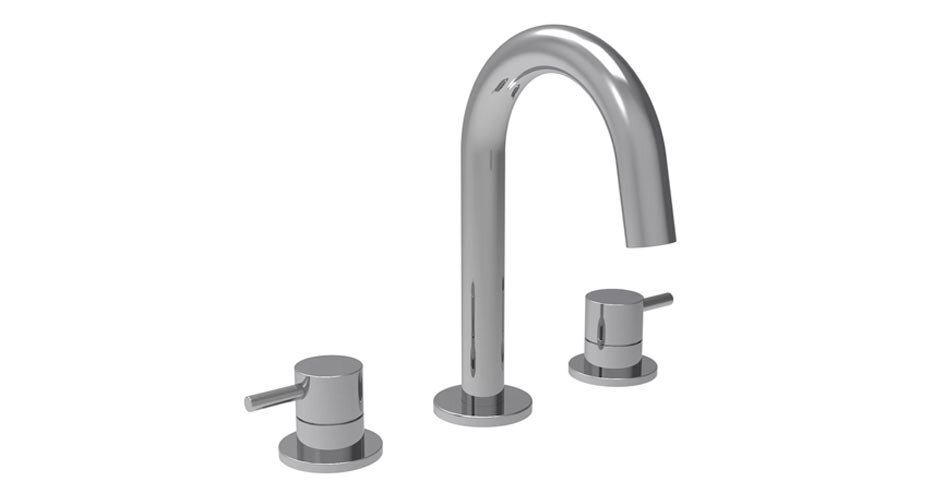It’s easy to imagine the image of a tap. Glass goes underneath, the handle is turned on, and water comes out – right? Well, as it turns out, that’s not quite right because there is more than one type of tap. There are several tap styles and mechanisms that all function differently.
Do a Google Image search for ‘different types of taps’, and you’ll see what we mean. And when you’re thinking about types of taps for a kitchen or bathroom renovation, or you’re just on the market for a tap washer replacement, it can all be quite confusing.
Which one is right for you? Will the tap type you select be appropriate? Can you pick the one that looks or works the best?
There are many questions about all those different types of taps, but first things first: what are all the different types of taps anyway?
Types Of Tap Styles
1. Pillar Tap

This traditional tap type is still popular and versatile. Go back to that original mental image of a single hot and a cold tap – welcome to the pillar tap!
- Best for: Traditional or vintage-style bathrooms and kitchens.
- Pros: Classic design, affordable.
- Cons: Lack of temperature control (water comes out hot or cold, not mixed).
2. Mixer Tap

The pillar tap may remind you of your childhood bathroom sink tap, but the mixer tap is probably what you have today. Essentially, it’s one unit from which you control the temperature of the tap by manipulating the two hot and cold handles.
- Best for: Kitchens and bathrooms where precise water temperature control is needed.
- Pros: Simple, efficient, and space-saving.
- Cons: It can be more expensive than traditional taps.
3. Wall-Mounted Taps

Wall-mounted taps are installed directly into the wall above a sink or bathtub, creating a sleek, modern look. These taps free up counter space, making them ideal for minimalist or contemporary designs. They are commonly used in bathrooms and often paired with vessel sinks or freestanding bathtubs.
- Best for: Contemporary and minimalist bathroom designs.
- Pros: It saves counter space and is stylish and modern.
- Cons: More complex installation and potential for leaks behind the wall if not installed correctly.
4. Floor-Mounted Taps

Floor-mounted taps (freestanding taps) are most commonly used with freestanding bathtubs. These taps rise from the floor and offer a dramatic, luxurious look in the bathroom. They are ideal for bathrooms with plenty of floor space and a focus on high-end design.
- Best for: Freestanding bathtubs in luxury bathroom designs.
- Pros: Elegant, luxurious aesthetic.
- Cons: High installation costs and requires sufficient space.
5. Sensor Taps

Sensor or touchless taps are becoming increasingly popular in modern homes and public bathrooms. These taps use infrared sensors to detect when your hands are under the spout, automatically turning the water on and off. They are highly hygienic and water-efficient, as they only activate when needed.
- Best for: High-traffic kitchens and bathrooms or for homes looking to improve hygiene and water efficiency.
- Pros: Hygienic, reduces water waste, convenient.
- Cons: Requires a power source (batteries or electrical) and can be more expensive than manual taps.
6. Three-Piece Taps

Three-piece taps (or three-hole taps) consist of a separate spout and two handles—one for hot water and one for cold water. This timeless option can be adapted to both traditional and modern designs. The separate handles allow for precise control of water temperature and flow and can be used in bathrooms and kitchens.
- Best for: Traditional or transitional kitchen and bathroom designs.
- Pros: Elegant, reasonable temperature control, versatile design.
- Cons: Takes up more space on the counter or sink.
Types Of Tap Mechanisms
1. Washer Tap
When you change a regular washer from a regular tap, you are working on a washer tap. The washer works by compression—twisting the handle anti-clockwise, allowing the water to come out, and vice versa. Eventually, most washers will wear and need replacing to stop dripping.
2. Disc Tap
Forget about the compression washer – in a disc tap, which is commonly easier to turn on and off than a normal washer tap, and ceramic discs control the water. These let the water out through holes when the user manipulates the handle to align them.
3. Ball Tap
Believe it or not, the ball tap contains a hollow ball that works like a washer. The handle moves the ball inside the fixture – water comes out. Unfortunately, these types of taps are prone to leaking.
4. Cartridge Tap
This tap type contains a sealed internal cartridge that allows the user to move the handle left and right for temperature and up and down for the strength of the flow from the nozzle.
5. Disc Valve Mechanisms
These taps use two closely fitted ceramic discs that rotate to allow water flow. They are highly durable and generally found in more modern taps. This mechanism efficiently controls temperature and flow and is less prone to wear.
That’s A Lot Of Tap Types!
So there you have it – a rundown of the different types of taps. Too much information to take in? Don’t worry! Ezy-Plumb is Melbourne’s veritable tap master, and we’re standing by to help with tap repairs and replacement, as well as the right advice. We’d love to hear from you.
